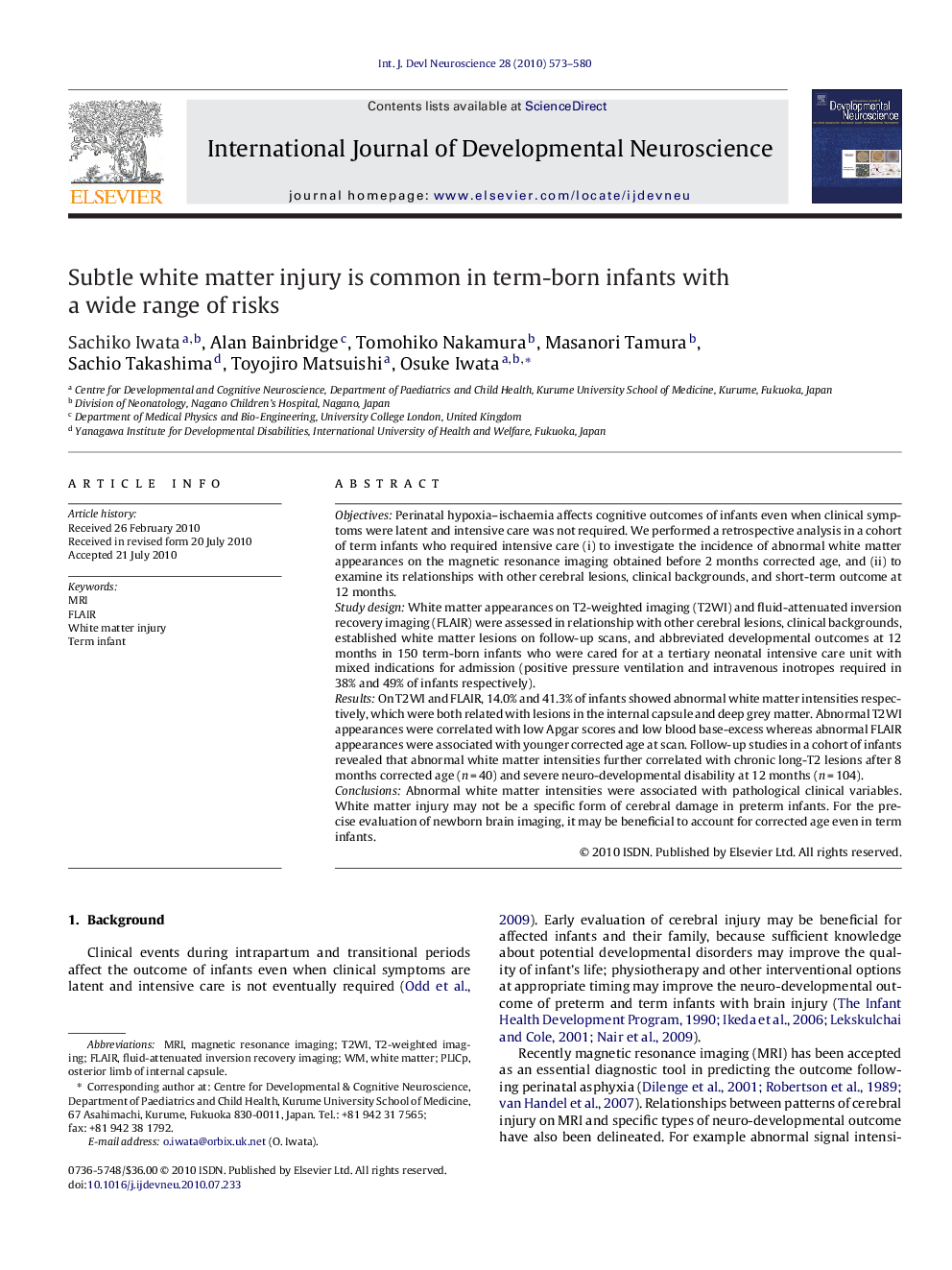| کد مقاله | کد نشریه | سال انتشار | مقاله انگلیسی | نسخه تمام متن |
|---|---|---|---|---|
| 2786734 | 1568425 | 2010 | 8 صفحه PDF | دانلود رایگان |

ObjectivesPerinatal hypoxia–ischaemia affects cognitive outcomes of infants even when clinical symptoms were latent and intensive care was not required. We performed a retrospective analysis in a cohort of term infants who required intensive care (i) to investigate the incidence of abnormal white matter appearances on the magnetic resonance imaging obtained before 2 months corrected age, and (ii) to examine its relationships with other cerebral lesions, clinical backgrounds, and short-term outcome at 12 months.Study designWhite matter appearances on T2-weighted imaging (T2WI) and fluid-attenuated inversion recovery imaging (FLAIR) were assessed in relationship with other cerebral lesions, clinical backgrounds, established white matter lesions on follow-up scans, and abbreviated developmental outcomes at 12 months in 150 term-born infants who were cared for at a tertiary neonatal intensive care unit with mixed indications for admission (positive pressure ventilation and intravenous inotropes required in 38% and 49% of infants respectively).ResultsOn T2WI and FLAIR, 14.0% and 41.3% of infants showed abnormal white matter intensities respectively, which were both related with lesions in the internal capsule and deep grey matter. Abnormal T2WI appearances were correlated with low Apgar scores and low blood base-excess whereas abnormal FLAIR appearances were associated with younger corrected age at scan. Follow-up studies in a cohort of infants revealed that abnormal white matter intensities further correlated with chronic long-T2 lesions after 8 months corrected age (n = 40) and severe neuro-developmental disability at 12 months (n = 104).ConclusionsAbnormal white matter intensities were associated with pathological clinical variables. White matter injury may not be a specific form of cerebral damage in preterm infants. For the precise evaluation of newborn brain imaging, it may be beneficial to account for corrected age even in term infants.
Research highlights▶ White matter (WM) injury has mainly been recognised in association with preterm birth. ▶ However abnormal WM intensities on MRI were common in a wide range of term infants. ▶ Abnormal WM intensities were related with adverse clinical conditions and outcomes.
Journal: International Journal of Developmental Neuroscience - Volume 28, Issue 7, November 2010, Pages 573–580